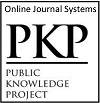FUSING SATELLITE DATA TO MONITOR SEA LEVEL CHANGES: A DEM-BASED NEAREST NEIGHBOR APPROACH
Abstract
High spatial and temporal resolution satellite imagery is essential for monitoring rapid environmental changes at finer scales. However, no single satellite currently provides images with both high spatial and temporal resolution. To overcome this limitation, spatiotemporal image fusion algorithms have been developed to generate images with improved spatial and temporal detail. Water level monitoring is also crucial for managing natural hazards like floods and tsunamis, but remote sensing satellites face challenges in continuous monitoring due to either low spatial or temporal resolution. For instance, while Landsat 8, with a spatial resolution of 30 meters, has been used for water level detection, it cannot capture fast-changing events because of its low temporal resolution. Conversely, the Advanced Himawari Imager (AHI) 8 offers observations every 10 minutes but has a coarse spatial resolution, limiting its ability to map sea level changes accurately. This study focuses on integrating Landsat and AHI imagery to monitor local and dynamic sea level changes. The process involves calibrating images from the study area to surface reflectance and co-registering them. The Normalized Difference Water Index (NDWI) is calculated from both Landsat and Himawari-8 images, serving as input for image fusion. In the previous study, the Spatial and Temporal Adaptive Reflectance Fusion Model (STARFM) is used for image fusion. In this study we use the application of Spatial Temporal Adaptive Algorithm for Mapping Reflectance Change (STAARCH) for the image fusion step. Since traditional methods are influenced by land cover changes, this study proposes a method called DEM-based Nearest Neighbor to select appropriate land cover maps for image fusion. Evaluation results demonstrate that this approach can produce accurate water coverage maps with both high spatial and temporal resolution.
Keywords
Full Text:
PDFReferences
M. Zhang, X. Chen, and J. Guo, "Multi-sensor image fusion for high-resolution remote sensing applications," IEEE Trans. Geosci. Remote Sens., vol. 57, no. 8, pp. 5860–5872, Aug. 2019.
X. Du, Z. Wu, T. Cheng, and J. Chen, "A novel hybrid method for image fusion of multi-resolution satellite imagery using deep learning," IEEE Access, vol. 8, pp. 30456–30467, Feb. 2020.
X. Zhang, Y. Li, L. Gao, and B. Chen, "Deep learning-based multisensor fusion for high temporal-spatial resolution remote sensing imagery," IEEE Geosci. Remote Sens. Lett., vol. 17, no. 12, pp. 1998–2002, Dec. 2020.
M. A. Shahtahmassebi, P. M. Atkinson, and J. Wang, "Spatial Temporal Adaptive Algorithm for Mapping Reflectance Change (STAARCH) using Landsat imagery," IEEE Trans. Geosci. Remote Sens., vol. 57, no. 5, pp. 2761–2773, May 2019.
K. Zhang, X. Zhang, J. Wu, and L. Wang, "Multisensor fusion using spatial temporal adaptive algorithms for real-time environmental monitoring," IEEE Access, vol. 9, pp. 12348–12360, Feb. 2021.
A. Putri, S. A. Nazhifah, A. Ridho, H. Maghfirah, C. Mutia, C. R. Niani, and S. Sanusi, "The feasibility of fusing satellite imageries for high-frequency sea level monitoring," Cyberspace: Jurnal Pendidikan Teknologi Informasi, vol. 8, no. 1, pp. 46-54, Mar. 2024.
DOI: http://dx.doi.org/10.22373/cj.v8i2.26369
Refbacks
- There are currently no refbacks.
Copyright (c) 2024 Andriani Putri, Sri Azizah Nazhifah, Abdurrahman Ridho, Hayatun Maghfirah, Cut Mutia, Cukri Rahmi Niani
except where otherwise noted.






















